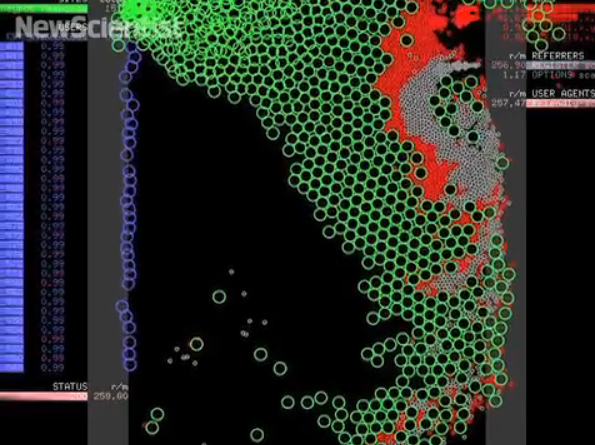I've re-done the test using Mia and trying to work on lighting issues with the opening shot that were seen in the first test. I've changed the vomit to paper, which is going to say 'GAME OVER' in a printed style. I really like how the paper looks coming out of Mia's mouth.
The piece is an abstract look at how computer viruses attack and what would happen if they were airborne.
I'm still working on what the virus is going to look like, as it stands it's going to be hand drawn like the germs, Skull and Crossbones, which flash with a warning sound, then this zooms out to reveal a 'space invaders' style scenario with germs, microchips moving down attacking Mia's face which is trying to shoot them. They quickly destroy her head which results in GAME OVER looping over and over again in green in her eyes. The camera then zooms out to reveal Mia's face as she is slumped against an old door, she them vomit's up GAME OVER on paper.
I really like this short animation, made to simply show who a computer fights off attacks from viruses and hackers. The basic graphics are really quite effective and reminds me of n 80s video game, very abstract.
Ben Reardon of
Dataviz Australia has created a stunning visualisation that shows a single attack on a
voice-over-IP (VOIP) server, similar to those used for Skype. Hacked VOIP servers are often used for black-market communications and cheap calling-card scams. In the video above, the server is shown on the left, where the accounts of the people signed up to make calls are represented by blue bubbles. A hacker's attack comes from the right, launching small white and red bubbles that represent scans from a malicious computer program. The battle that plays out is slowed down by 25 per cent.
If the hacker's scans connect with the blue bubbles, they may be able to compromise the server, gathering the passwords of account holders and ultimately letting the hacker control other people's phone activity.
To protect itself against the attack, the server releases green
honeypots: disguised data released to trap the intruding scans. But the hacker then increases the number of scans in an attempt to overwhelm the honeypots. In the end, the server wins the battle.
from NEW SCIENTIST MAGAZINEhttp://www.newscientist.com/blogs/nstv/2011/03/born-to-be-viral-computer-fights-hacker-attack.html
Here is a test, based on the 'Germinator' video previously talked about. It's simple and easy to make but I really enjoy it. This test was made really quickly and I used some free sounds to enhance it.
As I work with young people who have never made animations before I am really inspired by their work and the way it looks. It may not seem "professional" or tidy as such, but I really like the style and the way the process is sometimes shown (via a hand in shot) so I would like my work to reflect my feelings toward this 'chaotic' aesthetic.
> A computer disk draw opens
> Inside are these germs looped
> A sneeze blows them into the streets
>They go into someone's mouth
> The camera pans up to their eyes
> Their eyes black out and then a computer virus is seen hacking their mind
> They vomit computer components - wires, circuit boards etc...

 RSS Feed
RSS Feed